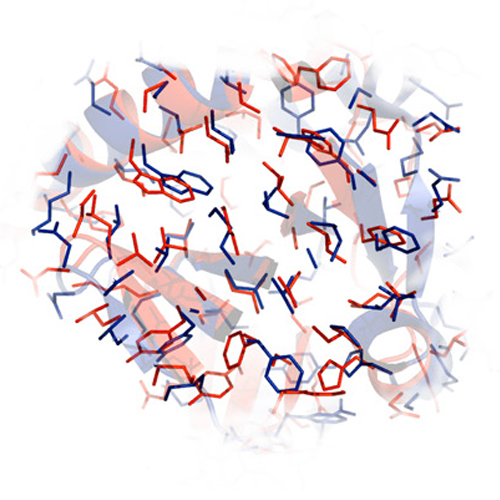Determination of solution structures of proteins up to 40 kDa using CS-Rosetta with sparse NMR data from deuterated samples
25-Jun-2012
PNAS, 2012, doi: 10.1073/pnas.1203013109, published on 25.06.2012
We have developed an approach for determining NMR structures of proteins over 20 kDa that utilizes sparse distance restraints obtained using transverse relaxation optimized spectroscopy experiments on perdeuterated samples to guide RASREC Rosetta NMR structure calculations. The method was tested on 11 proteins ranging from 15 to 40 kDa, seven of which were previously unsolved. The RASREC Rosetta models were in good agreement with models obtained using traditional NMR methods with larger restraint sets. In five cases X-ray structures were determined or were available, allowing comparison of the accuracy of the Rosetta models and conventional NMR models. In all five cases, the Rosetta models were more similar to the X-ray structures over both the backbone and side-chain conformations than the “best effort” structures determined by conventional methods. The incorporation of sparse distance restraints into RASREC Rosetta allows routine determination of high-quality solution NMR structures for proteins up to 40 kDa, and should be broadly useful in structural biology.











